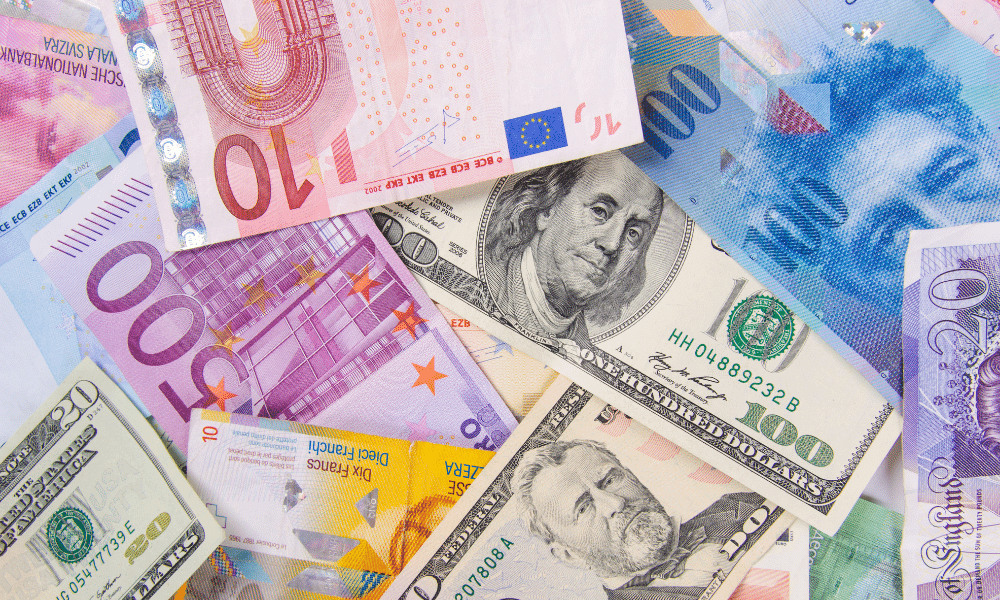
SINGAPORE (Reuters) - The euro was pinned near a 21-month low on Thursday by worries that Russia's invasion of Ukraine will hurt European growth, while commodity currencies hit multi-week highs as export prices surged.
The euro recovered to $1.1111 early in the Asia session from an overnight trough of $1.1058, its lowest since May 2020. Yet it is down 1.4% for the week so far and is heading for a fourth consecutive weekly loss against the U.S. dollar.
The Australian dollar, on the other hand, touched a seven-week high of $0.7306 on Wednesday and hovered near that at $0.7295 on Thursday as prices for Australian exports such as coal, gas and grains soar.
The euro is now down nine sessions in a row to a four-year low of A$1.5218 against the Australian dollar.
"In the current crisis, we view the euro's status as vulnerable," said senior FX strategist Jane Foley at Rabobank, which is reviewing its $1.11 target on the downside.
"On a corporate level there is web of complex relationships between the EU and Russian firms, particularly in the energy sector," Foley said.
"Energy prices have pushed higher as have those for many agricultural products. The war in Ukraine thus suggests higher for longer inflation and the potential of slower economic growth."
Eurozone inflation hit a record high at 5.8% last month, overnight data showed, surpassing expectations and prompting warnings from policymakers about stagflation.
Sterling has been tugged lower with the euro since Russia's invasion, although it managed a bounce from Wednesday's low of $1.3275 to trade at $1.3387 in Asia.
Havens such as the yen and Swiss franc have been supported, though they dipped overnight with strength from the dollar and riskier currencies. The yen last traded at 115.54 per dollar. The U.S. dollar index sat at 97.479.
Federal Reserve Chair Jerome Powell said on Wednesday the central bank would begin "carefully" raising interest rates this month, but was ready to move more aggressively if needed - more or less the scenario traders have priced in.
BOMBARDMENT
Ukraine's second-biggest city, Kharkiv, suffered heavy bombardment on Wednesday, leaving its centre a wasteland of ruined buildings and debris. Russia said its forces had captured the Black Sea port of Kherson.
Brent crude futures jumped to a seven-year high of $115.11 a barrel. That surge and the Bank of Canada's first interest rate hike since 2018 pushed the loonie to a five-week high of C$1.2628 per dollar.
A U.N. resolution reprimanding Moscow was supported by 141 of the assembly's 193 members and heavy sanctions have hammered Russian assets and the rouble, which touched a record low of 100 per dollar in Moscow on Wednesday.
| ✅Claimed In 2022 Three Most Effective Trading Indicators For Forex Traders |
The rouble was a little firmer at 97.999 to the dollar in interbank trade outside Russia.
Eastern European currencies, meanwhile, have been walloped, with the Hungarian forint hitting record lows on the dollar and the euro overnight and the Polish zloty slumping to a two-decade trough. [EMRG/FRX]
The New Zealand dollar held near Wednesday's one-week top at $0.6779. Bitcoin bought $44,000 as an early-week bounce lost steam.
Currency bid prices at 0059 GMT
Description RIC Last U.S. Close Pct Change YTD Pct High Bid Low Bid
Previous Change
Session
Euro/Dollar
$1.1103 $1.1119 -0.15% -2.34% +1.1121 +1.1102
Dollar/Yen
115.5950 115.5300 +0.07% +0.51% +115.6050 +115.5000
Euro/Yen
128.33 128.43 -0.08% -1.53% +128.4700 +128.2500
Dollar/Swiss
0.9211 0.9205 +0.07% +0.98% +0.9211 +0.9203
Sterling/Dollar
1.3383 1.3405 -0.16% -1.04% +1.3404 +1.3384
Dollar/Canadian
1.2644 1.2631 +0.11% +0.01% +1.2646 +1.2630
Aussie/Dollar
0.7287 0.7298 -0.14% +0.25% +0.7297 +0.7287
NZ
Dollar/Dollar 0.6776 0.6787 -0.14% -0.99% +0.6786 +0.6776
All spots
Tokyo spots
Europe spots
Volatilities
Tokyo Forex market info from BOJ